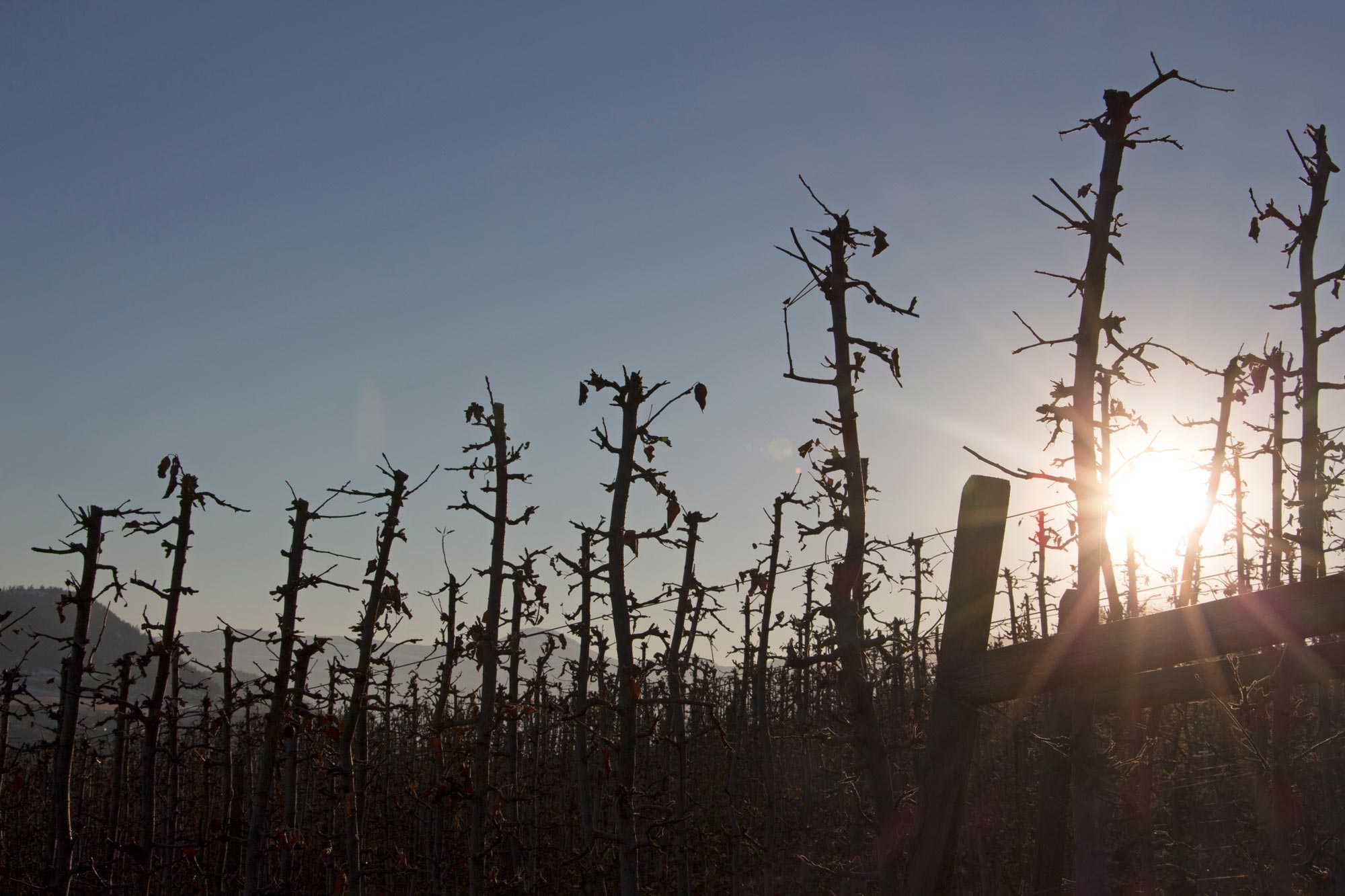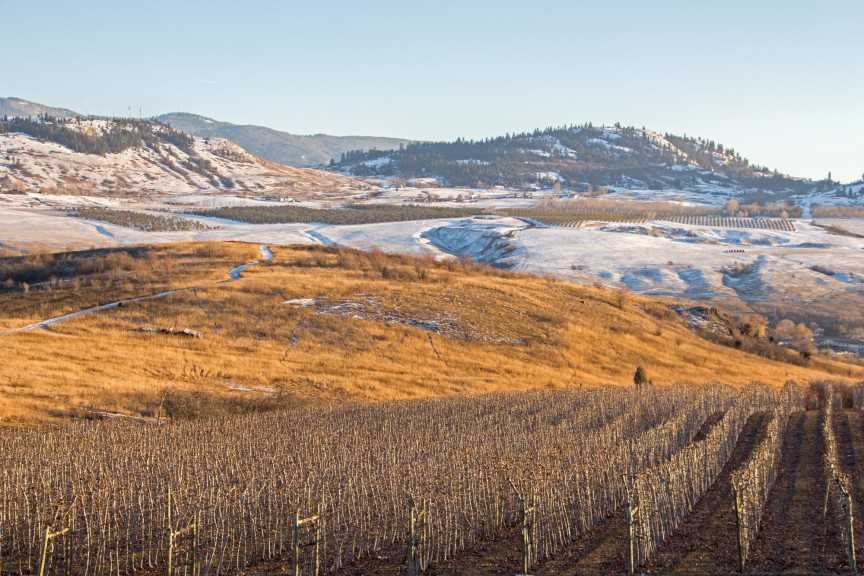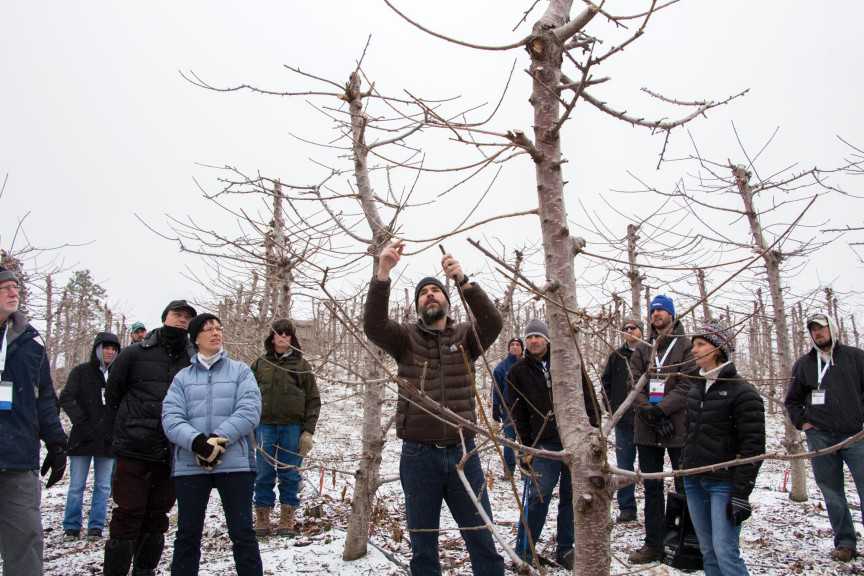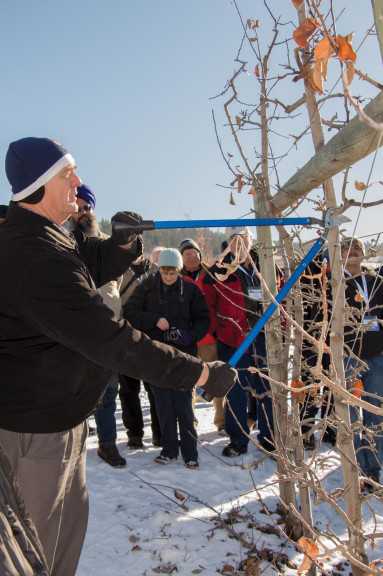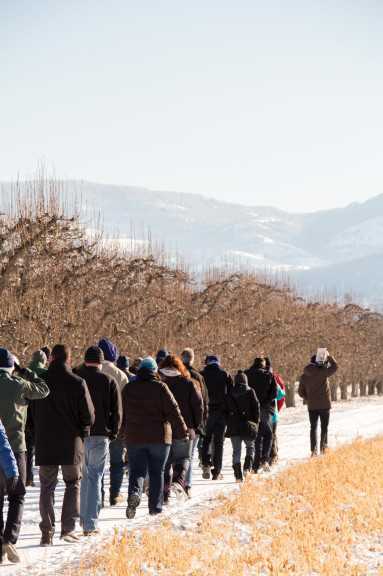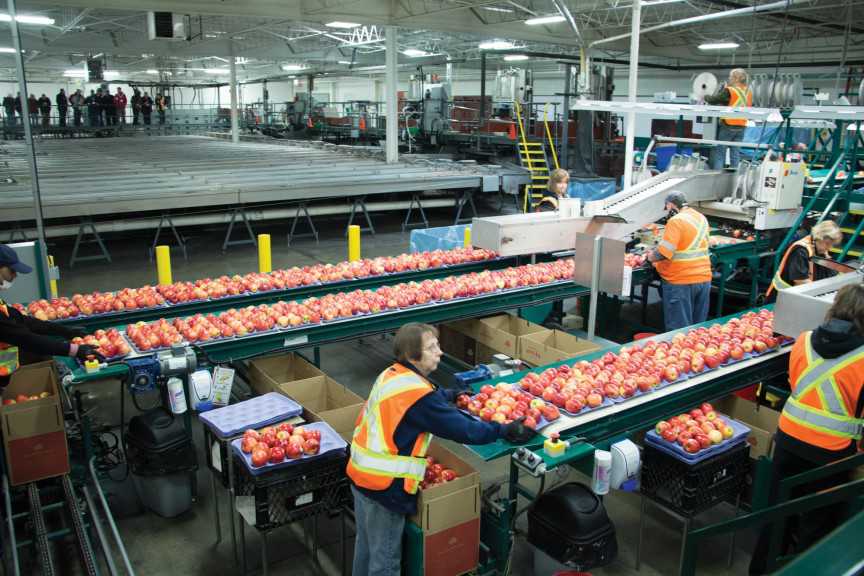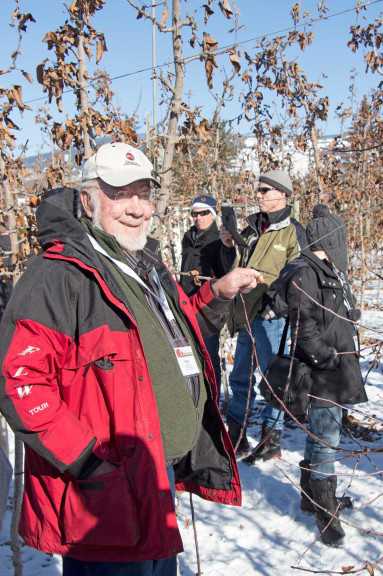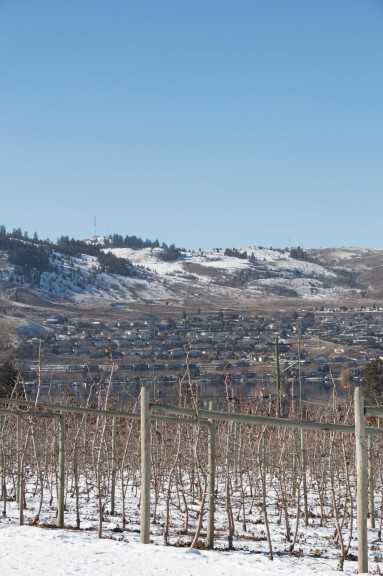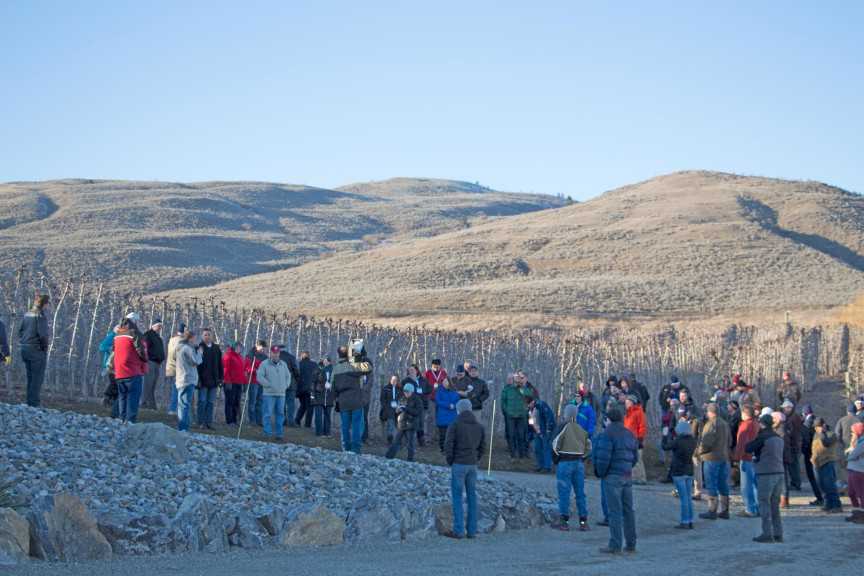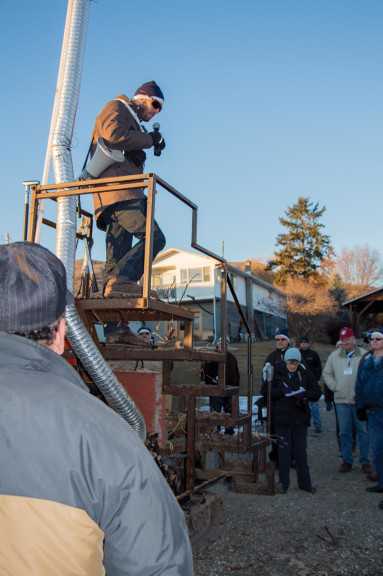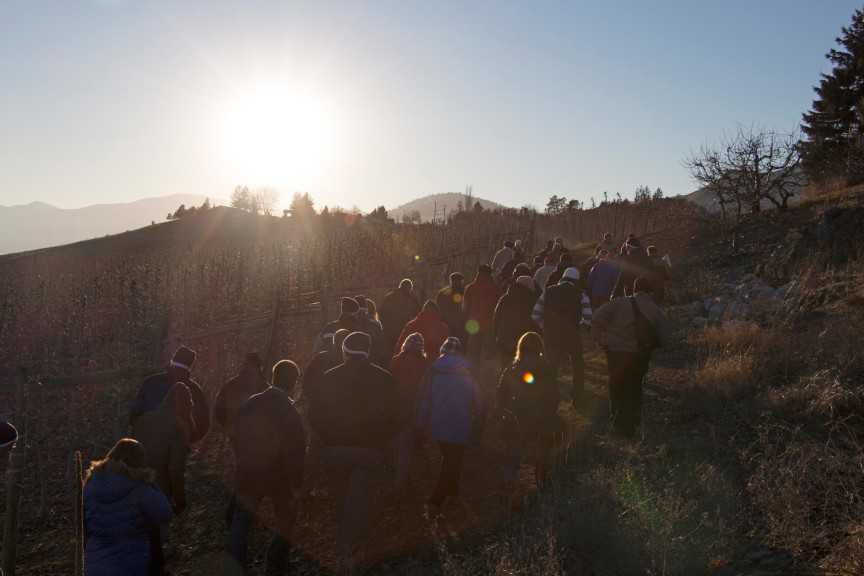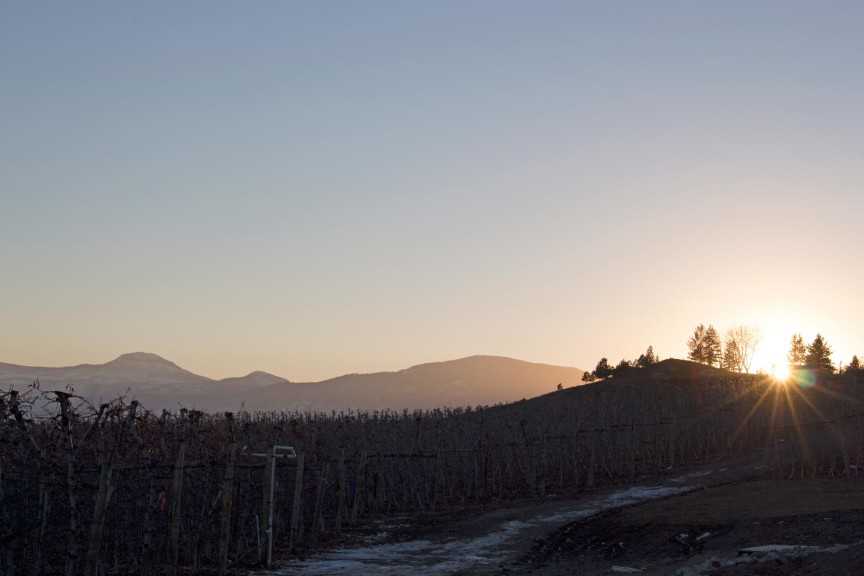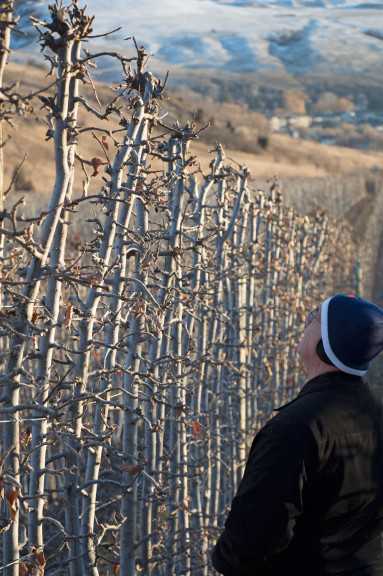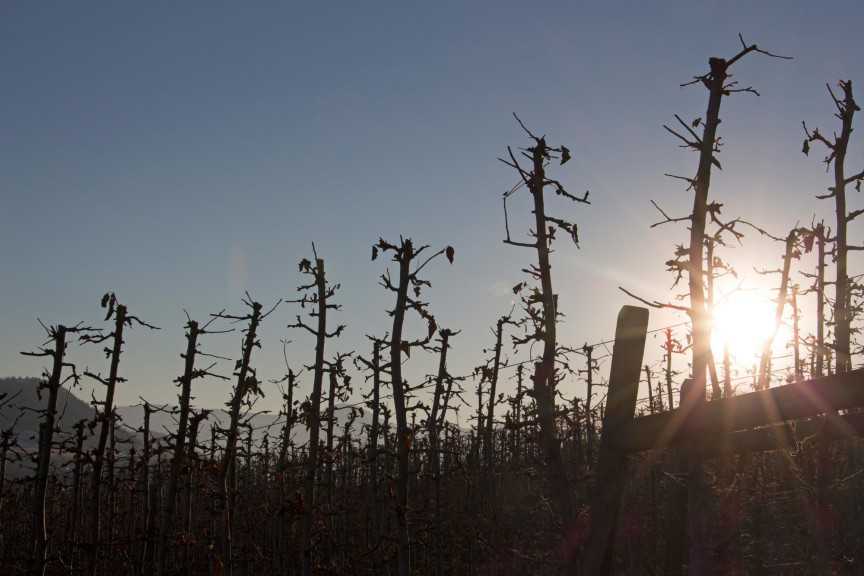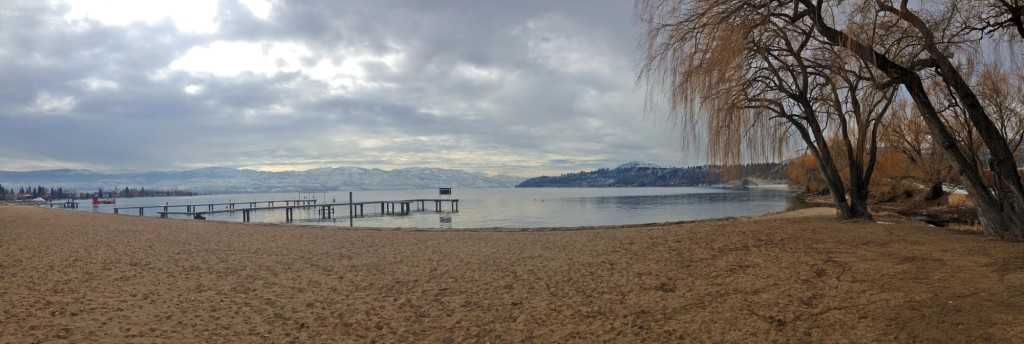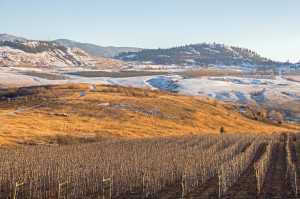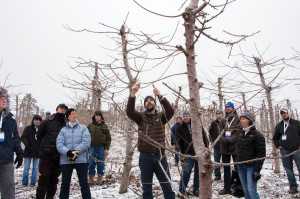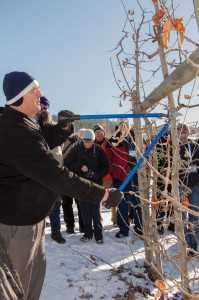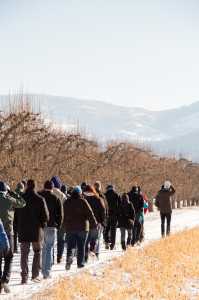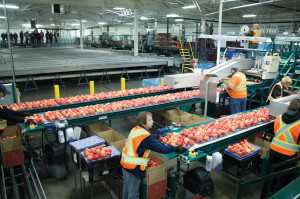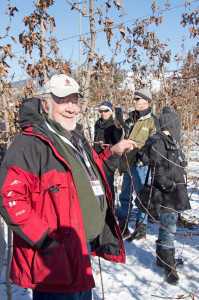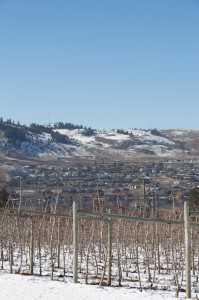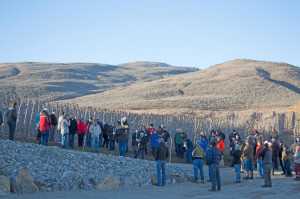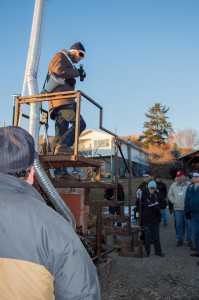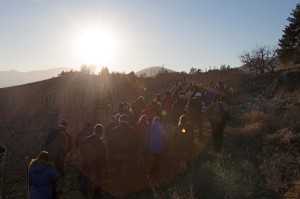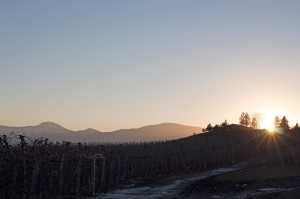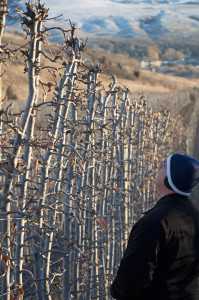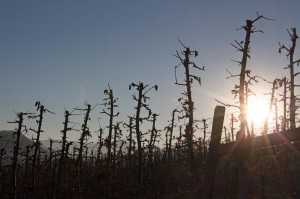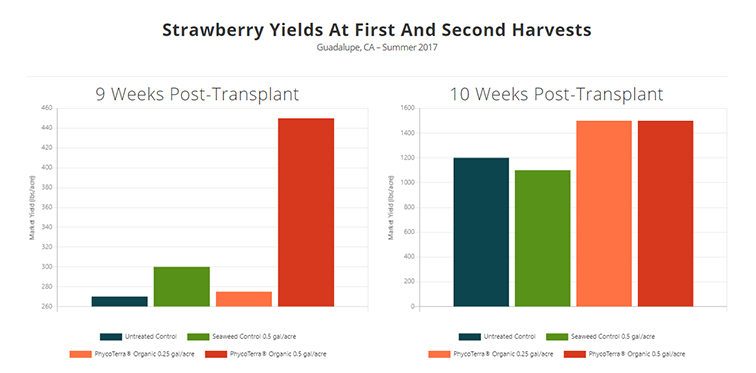8 Takeaways From IFTA 2014
[blackoutgallery id=”58238″]
“Your orchard should be at its best the day before you stick a tree in the ground.”
That comment by Bruce Allen of Columbia Reach Pack/Chiawana Orchards encapsulated the focus of the 57th Annual International Tree Fruit Association (IFTA) Convention in Kelowna, B.C.
The over-arching theme of this year’s convention was precision orchard management. Allen stressed that successful orchard management has to do with strong horticulture skills, as well as site, system, and canopy selection.
“If you’re not an early innovator in the ag community — regardless of crop — you’re going to be out of business quickly,” Allen says.
With innovation and progression at the heart of the IFTA convention, here are eight things you need to know about this year’s conference.
1. 100 Bins Per Acre?
Amid the discussions about how to maximize growers’ returns on investments, Bruce Allen was asked how far the bar can be raised with Washington apple production.
“I hope to see 100 bins per acre by the fifth leaf,” says Allen.
This was a surprise to the audience, especially growers from the Eastern U.S. However, in a panel discussion on precision crop load management, Mike Robinson of Double Diamond Fruit in Quincy, WA, says that it is possible for apple growers in Washington to achieve 100 bins per acre, given good horticulture practices.
To get to 100 bins per acre, Robinson says growers have to target yields per acre, per tree, and fruiting foot. Growers must also stick to desired bud counts with aggressive pruning and must hand-blossom-thin Galas.
2. Super-Spindle Spotlight
The majority of acres in the Okanagan Valley are devoted to super-spindle, high-density apple orchards. Growers cite the unique growing climate and amount of sunlight available as reasons for adopting this growing system (see Get To Know Kelowna sidebar).In a grower panel on training systems, the benefits and individual strengths of super-spindle, V-trellis, and tall spindle systems were discussed.
Steve Brown of BC Tree Fruits Cooperative likened growing apples in a high density system to buying a car. “Are you ready for what’s required of the system?” he asked.
Representing the super-spindle growers, Brown says high-density apple growers often think of their bottom line in pruning.
“Thinking about the bottom line can be dangerous,” says Brown. “There are ways to plant a tip-bearer in high density and tight plantings, but there are rules and cuts to be made. Growers find it hard to make those cuts.”
Brown grows apples and cherries on 15 acres in Summerland, B.C., and labor is mostly family. Given that limitation, he mechanized, converting a Japanese rice picker to be a harvest platform. Brown says the rice picker was a low-cost investment. It didn’t take long to decide he wouldn’t pick apples without the rice picker.
“It’s much harder to go up on those ladders,” says Brown.
3. Ambrosia, The Belle Of The Ball
A British Columbia original, the Ambrosia apple variety was in the spotlight at IFTA, with American apple growers paying close attention to Ambrosia blocks on orchard tours. Although the Ambrosia apple’s parentage is unknown, it was discovered in the early 1990s.The fruit is medium to large in size, with skin color of 80% red with a pink to red blush and conic fruit shape.
The fruit flesh is known for being crisp, sweet, aromatic, and juicy. With the variety patented, plantings are limited in the states.
4. DA Meter
The DA meter is a non-destructive tool for growers to monitor a fruit’s ripening and can help a grower calculate optimal harvest time and maturity changes for storage. The tool measures the fruit’s dry matter content (DMC) — the solid component of the fruits once the water is removed. Dry matter consists of soluble carbohydrates such as fructose, sucrose, and glucose.The DA value is related to the ethylene produced in the fruit, indicating that ripening has begun. The numeric value decreases during ripening, until minimum value is reached.
Larry Lutz of Scotian Gold in Upper Canard, Nova Scotia, uses his DA meter to predict the harvest maturity of his apples, especially Honeycrisp. Lutz also uses the meter to track chlorophyll activity and loss. With the meter he is able to decide when to begin and end harvesting and segregating fruit storage from long-term, optimal maturity, to short-term storage, with over-mature and immediate sale crop.
“The DA meter leaves the guesswork out of optimum Honeycrisp harvest maturity, and is much better than a starch-iodine test,” says Lutz. “We need to know harvest maturity window in order to get Honeycrisp off (the tree). Honeycrisp is ready when its ready, not when you’re ready.”
Chris Willett of Enza Fruit Products, Inc., says that apples with high DMC can be seen in orchards with dwarfing rootstock, trees with balanced crop load, a canopy with good light exposure, precisely managed water, and fruit harvested from early picks.
He has been conducting destructive dry matter content tests using a fruit dehydrator. With these tests, Willett noticed a strong relationship with fruit firmness and fruit maturity. There is more variability with fruit firmness per variety.
5. Cherry Handling
“Harvesting fruit can do nothing but harm the fruit. There is nothing you can do at harvest that will improve the fruit,” says Peter Toivonen of Agriculture and Agri-Food Canada.
Toivonen’s presentation focused on the precision elements of harvest management. Growers can and should take steps to prevent more injury to cherries during harvest. This includes instructing pickers on proper ladder placement and policing pickers to make sure they are efficient but taking care in the picking process.
“Damage to cherries at picking will lead to decay (in storage),” says Toivonen.
Stem browning is another injury to cherries that occurs during harvest, Toivonen says. Water in the cooling lines activates an enzyme in harvested cherries exposed to sunlight. As a solution, he recommends growers purchase reflective tarp covers to prevent brown stems. He notes that the reflective tarp covers keep humidity of harvested cherries at 100% and prevent stems from drying out.
During Toivonen’s presentation, he played sound clips of cherries dropped from different heights into different picking containers including corrugated plastic and padded metal buckets. The damage was clear.
To prevent further injury to cherries, he recommends using picking buckets lined with softer, closed-cell foam. Cherries should not be dropped from any higher than 7.5 inches, otherwise damage will occur, and cherries shouldn’t be transferred from a picking tote to a bucket — there is a greater risk for injury, he notes.
“Cherry abuse can be prevented, so it should be outlawed,” says Toivonen.
6. Precision Orchard Management
“A rogue branch is a baseball bat. 3/4 inch (limb) is my diameter (to aim for),” says Terence Robinson of Cornell University while out in Rajan Bagha Orchards in Vernon, B.C., during the IFTA field learning tour.
As moderator of a panel on precision orchard management, Robinson acknowledges the challenge that precision orchard management is for family farms, but he says “there is value.
We can afford to manage crop load more precisely.”
Robinson’s steps to precision crop load management are first, to prune to 1.5 buds per desired number of fruit, especially with Honeycrisp; second, apply chemical thinners based on carbohydrate model and fruitlet growth rate model; and lastly hand thin to adjust to desired crop load.
“Pruning shears are the first line of defense to avoid biennial bearing of Honeycrisp,” says Robinson.
7. Cherry Rootstock
“We’re in the business of growing fruit, not timber,” says Greg Lang of Michigan State University. To counter the idea that vigor-controlling, precocious rootstock influence the fruit size of cherries, Lang says “95% (of cherry fruit size) is how you manage the tree.”
Cherry rootstocks were a focus of several presentations by leading researchers in the field.
Lynn Long of Oregon State University suggests that for precocious cultivars such as Sweetheart, moderate rootstocks are a better fit. He suggests Mazzard 14 or Krymsk 5 as possibilities for Sweetheart. Regina, a popular planting, needs a rootstock that will encourage increased production, says Long. In Oregon, growers plant Regina with Gisela 12. With Bing, growers need to keep the leaf to fruit balance, he suggests Mazzard 14.
Lang says that Krymsk is more adaptable to several soils, but growers have been favoring Gisela. In California, though, Krymsk is favored as a rootstock, in part because of the higher royalties and fees that growers have to pay for the Gisela rootstock.
Long expressed some concern about the new rootstocks from Michigan State University. He says that Clinton, Crawford, Cass, Lake, and Clare have greater flowering than Gisela 5 and 6. He noted that there is potential to turn plans upside down with these new rootstocks and guarantee high yields every year.
As far as concerns about the royalties and fees that growers pay, Lang suggests that royalties should be proportional to tree vigor. “Lower royalties on more dwarfing trees, resulting in equivalent royalty costs per acre for very high, high, or moderate density orchards,” he says.
He suggested $1.50 per tree for Gisela 6, 12, 13, and Krymsk 5 and 7; $1.00 for Gisela 5, Krymsk 6, Clinton, and Crawford; $0.50 for Gisela 3, Cass, Lake, and Clare.
Lang says that rootstocks and growing systems vary depending on the location, and at those locations different results can be experienced. Ultimately, sweet cherry growers are looking for the best system that provides the most light to the canopy.
8. Future Of The Industry
What does the future of the apple industry look like? Keith Carlson of Okanagan Plant Improvement Corporation, predicts an increase of production in South America, with 30% of the total fruit produced coming from the Southern hemisphere.
Carlson expects international labor standards and international wage consistencies to play a key part of the future of the tree fruit industry. He also sees a consolidation in the fruit supply, with fewer growers and larger farm operations, with more partnerships developing. The landscape of the retail market will also evolve, with large supermarket owners and local stores using large supply chains. He also sees urban markets expanding with rural markets shrinking.
Carlson says we will see more private brands in fruit and produce in big and small stores, and with the introduction of more regional club varieties, “this will play a greater role in the future of the industry,” he says.
With the possibilities widening in the future, it’s important for growers to plan and start each tree properly in order to start the orchard off on the right foot.
“I’ve seen too many growers go out of business,” says Bruce Allen. “(Growers) need good horticulture skills on day one, so the tree is productive to start.”

Okanagan Lake surrounds Okanagan Valley of British Columbia. The hot, dry summers, full of sunlight provide a perfect climate for growing tree fruit. (Photo credit: Christina Herrick)
Get To Know Kelowna
Kelowna, British Columbia, was the locale for the 57th Annual International Tree Fruit Association Conference. Nestled in the Okanagan Valley, the area has become a popular destination for vacationers, with approximately 83 miles surrounding Okanagan Lake. With the valley’s mild, dry climate, many people are choosing to relocate to the area. This increased demand for land has caused prices to skyrocket to an average of $100,000 an acre. Growers are in competition for land and water resources and often lease the land they grow on.
The hot, dry summers, filled with sunlight make for a perfect climate for tree fruit. Soils in the Okanagan Valley tend to be sand, silt, or clay.
Super-spindle growing systems are in favor in British Columbia, also due to the high demand for land in the Okanagan Valley. Orchards are often near residential areas and on smaller parcels of land.
Growers also favor the British Columbia-native Ambrosia variety, which is well suited to the super-spindle. Super-spindle growing systems help growers plant more trees per acre, often on smaller parcels of land.
Tree fruits have been a part of the Okanagan region since it was first settled. It is believed Father Pandosy, a French Catholic priest, planted a seedling and developed the first orchard at his mission.
Today, approximately 1,200 growers make up the British Columbian tree fruit industry, with 400-500 large commercial growers.
British Columbian apples make up about 30% of the apples grown in Canada, with 98% of those grown in the Okanagan region. Approximately 12,600 acres are planted and 275
million pounds are harvested annually in the region. Popular varieties include Royal Gala, Honeycrisp, Fuji, and Ambrosia.
Cherries from British Columbia make up 60% of the Canadian crop. Annually, 11 million pounds of sweet cherries are produced on 3,500 acres, with varieties like Skeena, Staccato, Lapins, Sweetheart, and Regina. New varieties are being developed at the Pacific Agri-Food Research Centre in Summerland, B.C. According to estimates, 80% of new cherry plantings worldwide are of the Summerland varieties.
Varieties such as Anjou, Bartlett, Bosc, Red and Asian make up 50% of the Canadian pear crop. Annually, British Columbia growers produce approximately 15 million pounds of pears on approximately 740 acres.
British Columbia Ministry of Agriculture information
Interactive Side Of IFTA
If you weren’t able to attend the conference in Kelowna, live Tweets and Instagram photos from the conference made it seem like you were sitting in on the presentations and out on the field tours.
@HerrickAFG: Stefano Musacchi, if you don’t know the habit of the rootstock, variety of pears then you are in trouble with precision plantings. #IFTA2014
@HerrickAFG: Sunset on the ride home from #ifta2014 bus tour http://instagram.com/p/k3e8-ZPrDW/#

@HerrickAFG: Jamie Kidston says that he has support from local government, but “the local government can’t protect you against angry neighbors.” #IFTA2014
@HerrickAFG: Top minds of the cherry industry here at #IFTA2014. Can you name all of them?
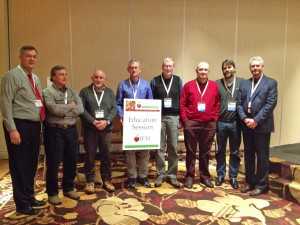
Pictured from left are Terence Robinson of Cornell University, Matias Kulczewski of Asesorias K&R in Chile, Kym Green of Ellimatta Orchards in Australia, Greg Lang of Michigan State University, Lynn Long of Oregon State University, Stefano Musacchi of Washington State University, Matt Whiting of WSU, and Hank Markgraf of BC Tree Fruits Cooperative.
As part of the With a focus on nitrogen, cautioned:
@HerrickAFG: Denise Neilsen: “There is a maximum nitrogen that sweet cherry tree moves to storage. Only apply if tree low in N in fall.” #IFTA2014
@HerrickAFG: Former @iFruitTree presidents recognized at #IFTA2014.

Larry Lutz, Mo Tougas, Neal Manly, Tom Chudleigh, Ken Hall, Evan Milburn, and Wally Hauser — all former IFTA presidents — along with current president Phil Schwallier, presented the Kelowna planning committee gold “Looney” necklaces as a thank-you for their hard work.
For more on the sessions on precision water management, precision pesticide application, fruitlet analysis, and updates on cherry, apple, and pear varieties and rootstocks, check out her Twitter feed at @HerrickAFG. And for another view of the Kelowna experience, follow her on Instagram at instagram.com/HerrickAFG.





